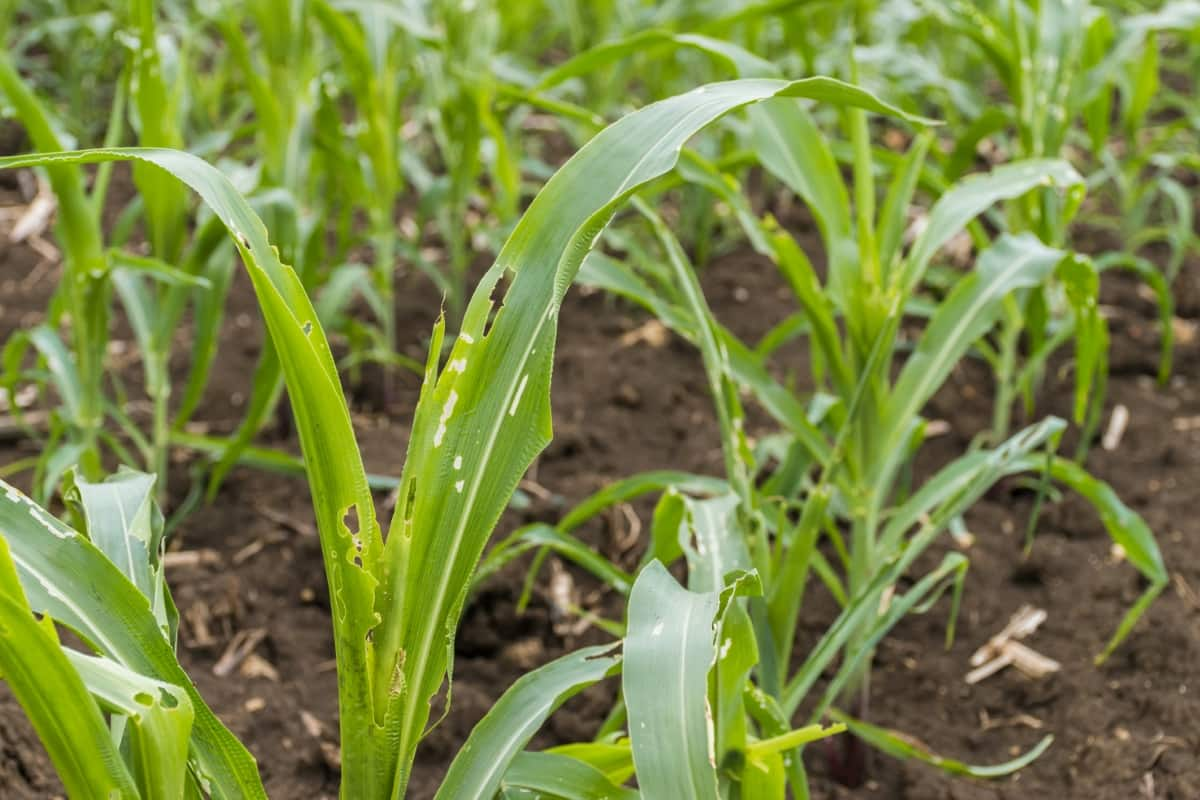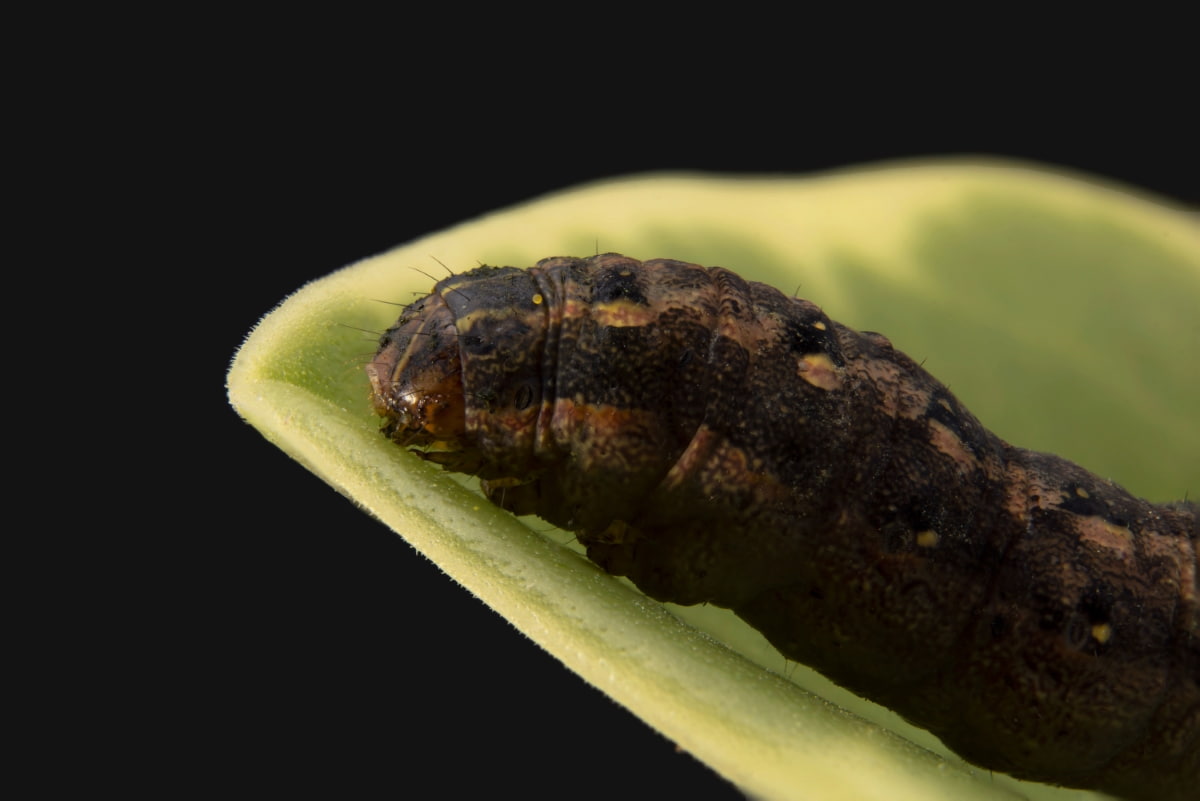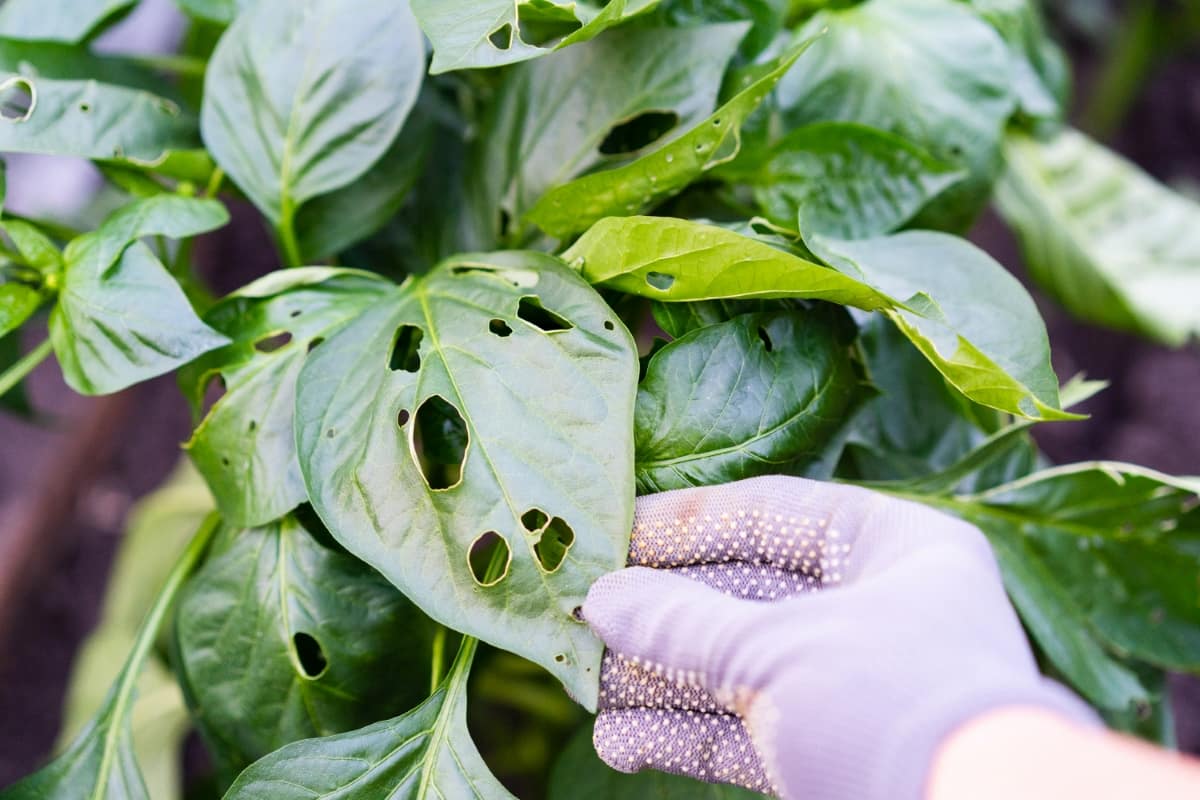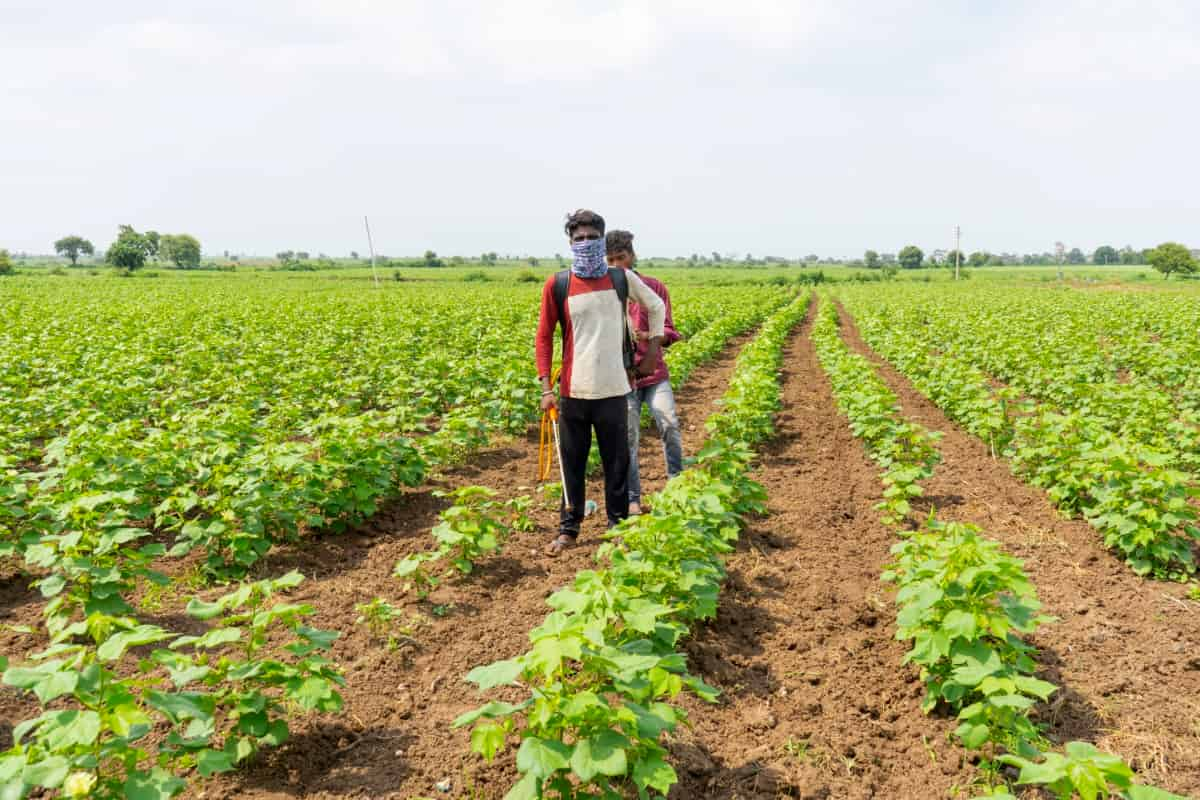Spodoptera damage in crops refers to the harm caused by a group of pest insects known as Spodoptera, commonly referred to as armyworms or cutworms. When Spodoptera infest crops, they feed on the leaves, stems, and reproductive structures of plants. Effective management strategies are crucial to prevent extensive damage caused by Spodoptera infestations.

Spodoptera Damage in Various Crops
Spodoptera Infestation in Maize Fields
It can be a significant threat to farmers and their yields. These voracious pests, also known as armyworms, feed on the leaves and stems of maize plants, causing significant damage. The larvae of Spodoptera species are particularly destructive, chewing through the foliage and sometimes even burrowing into the ears of corn.
When left unchecked, Spodoptera infestations can lead to reduced crop quality and yield losses. To effectively manage Spodoptera damage in maize fields, farmers must implement integrated pest management strategies. Additionally, biological control agents like natural enemies or microbial insecticides can play a vital role in suppressing Spodoptera populations.
Impact of Spodoptera on Rice Cultivation
Rice, being a staple food around the world, is a crucial crop that needs to be protected from various pests. One such pest that poses a significant threat to rice cultivation is Spodoptera. These voracious feeders can cause severe damage to rice plants at every growth stage. During the early stages of infestation, Spodoptera larvae feed on the leaves and young shoots of rice seedlings.
To control this pest effectively, integrated pest management (IPM) practices should be employed in rice cultivation. This includes cultural practices such as proper field hygiene and irrigation management to reduce favorable conditions for insect development. Early detection, coupled with appropriate measures, will go a long way in minimizing crop damage caused by these destructive pests.
Managing Spodoptera Damage in Soybean Crops
Soybeans are a valuable and widely cultivated crop, but they are not immune to the ravages of pests like the Spodoptera caterpillar. These voracious insects can quickly decimate soybean fields if left unchecked. However, there are effective strategies that farmers can employ to manage and control Spodoptera damage.
One method is to implement cultural practices such as planting early or late-maturing varieties, as these can escape peak pest populations. Crop rotation is another helpful practice since it disrupts the life cycle of these pests. Regular monitoring of fields helps determine when intervention is necessary and ensures appropriate action is taken promptly.
Spodoptera Outbreaks in Cotton Plantations
Spodoptera outbreaks can wreak havoc on cotton plantations, causing significant damage to the crops. When Spodoptera infest cotton fields, their feeding activity can lead to defoliation and reduced yields. Managing Spodoptera outbreaks in cotton plantations requires a comprehensive approach.
In case you missed it: Root Rot Disease Management in Cotton: Symptoms, Treatment, Chemical, Biological, Natural, and Organic Control

Integrated Pest Management (IPM) techniques are often employed to control these pests effectively. Cultural practices such as crop rotation and maintaining field hygiene play a crucial role in reducing Spodoptera populations. Furthermore, regular monitoring is essential for early detection of infestations so that timely intervention measures can be implemented.
Controlling Spodoptera Infestation in Tomato Farms
These voracious pests can cause significant damage to tomato plants, feeding on leaves, stems, and fruits. As a result, the overall yield and quality of tomatoes can be severely impacted. One effective method to control Spodoptera infestation in tomato farms is through the use of biological control agents such as Trichogramma wasps.
Another approach is the use of insecticides specifically targeted at controlling Spodoptera. However, it’s important to choose a suitable insecticide that effectively targets these pests without harming beneficial insects or pollinators. Cultural practices like crop rotation and maintaining proper plant spacing can also help reduce Spodoptera populations in tomato farms.
Effects of Spodoptera on Sugarcane Production
Sugarcane, a vital crop in many regions, is not immune to the devastating effects of Spodoptera damage. These voracious pests can wreak havoc on sugarcane fields, causing significant economic losses for farmers. The damage caused by Spodoptera infestation in sugarcane crops can be extensive. The larvae feed on the plant leaves and stems, leading to reduced photosynthesis and stunted growth. As a result, sugar yields are significantly impacted.
Moreover, Spodoptera feeding can create entry points for diseases and secondary infections that further weaken the sugarcane plants. This makes them more susceptible to other pests as well. Farmers face immense challenges when it comes to managing Spodoptera infestations in sugarcane fields. To combat these issues effectively, integrated pest management (IPM) strategies are crucial. Farmers need to monitor their sugarcane fields regularly for early detection of Spodoptera infestations so that appropriate control measures can be implemented promptly.
Preventing Spodoptera Damage in Wheat Fields
The main aspect of IPM is monitoring and early detection. Farmers should regularly inspect their wheat fields for signs of Spodoptera presence, such as chewed leaves. By identifying the problem early on, appropriate measures can be taken before the infestation spreads. Maintaining proper field hygiene by removing crop residues after harvest helps eliminate potential hiding places for overwintering pests. Furthermore, physical barriers such as nets or screens may be used to protect young wheat plants during vulnerable stages when they are most susceptible to Spodoptera feeding damage.
Spodoptera Management Strategies for Sorghum
These voracious pests can quickly decimate sorghum crops if left unchecked. Therefore, implementing effective management strategies is crucial in protecting sorghum fields. The main strategy in managing Spodoptera damage in sorghum involves regular scouting and monitoring of the fields.
By closely observing the plants for any signs of pest presence, farmers can take timely action to prevent widespread infestation. Crop rotation also plays a vital role in managing Spodoptera damage in sorghum crops. By alternating between different crops each season, farmers disrupt the life cycle of these pests, making it harder for them to establish large populations.
Spodoptera Impact on Potato Yields
Potatoes are a staple crop in many parts of the world, providing a valuable nutrition source and income for farmers. However, the presence of Spodoptera can have a significant impact on potato yields. These voracious pests feed on the leaves and stems of potato plants, causing extensive damage.
In case you missed it: Homemade Remedies for Tackling Colorado Potato Beetles

Controlling Spodoptera in potato fields requires an integrated approach. Farmers can employ various management strategies such as cultural practices, biological control agents, and judicious use of chemical pesticides. Crop rotation and field sanitation help reduce overwintering populations while introducing natural enemies like parasitic wasps can provide effective biological control.
Integrated Pest Management for Spodoptera in Various Crops
Managing and controlling Spodoptera damage in crops is crucial to ensure healthy and productive harvests. Integrated Pest Management (IPM) techniques provide a practical approach to tackle this pest across various crops. IPM involves a combination of preventive, cultural, biological, and chemical control measures tailored to specific crop needs.
Preventive measures play a vital role in IPM for Spodoptera management. These include maintaining proper field hygiene by removing crop residues after harvest and plowing fields to disrupt overwintering pupae. Additionally, farmers should practice crop rotation as it helps break the pest life cycle.
Cultural control methods such as timely planting can also help deter Spodoptera infestation. Planting early or late in the season when moth populations are lower reduces the risk of larvae damaging young crops. Biological control agents offer sustainable solutions for managing Spodoptera damage without harming beneficial insects or pollinators.
Frequently Asked Questions (FAQ) on Spodoptera Damage in Crops
What Crops are Most Susceptible to Spodoptera Damage?
Spodoptera can target a wide range of crops, including corn, soybeans, cotton, rice, tomatoes, and many others. These voracious pests have a diverse palate and can cause significant damage if left unchecked.
How Do I Identify Spodoptera Damage in My Crops?
Look out for chewed leaves with irregular patterns or holes, defoliation of plants, and small greenish-black caterpillars feeding on the foliage or hiding inside the plant’s whorls. Spotting their presence early on is crucial for effective management.
How Can I Prevent Spodoptera Infestations in My Crops?
Implementing preventive measures can help reduce the risk of Spodoptera outbreaks. Regularly scout your fields for signs of infestation and remove any overwintering hosts or crop residues that may harbor insects during dormant periods.
In case you missed it: How to Get Rid of Household Pests: DIY Homemade Sprays for Controlling Household Pests

Conclusion
Spodoptera damage in crops can have a significant impact on agricultural productivity. Controlling Spodoptera damage is crucial because it directly affects farmers’ livelihoods by reducing their income and increasing production costs due to pest management measures. Moreover, crop losses from these pests can lead to increased food prices and shortages in the market.
- Deworming Schedule for Dogs/Puppies: A Beginners Guide
- How to Prevent and Control Parasites in Goats
- Beneficial Insects in Pest Management
- Natural Solutions for Pest Control in Flower Gardens
- Types of Fungicides Used in Agriculture
- Common Issues in the Fruit Development Stage of Pomegranate Farming
- Fruit Development Issues in Papaya: Easy Solutions and Treatment
- Soil-Borne Diseases and How to Protect Your Plants
- Practices to Prevent Disease Spread in the Garden